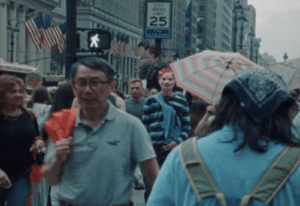
Stoplights, taxis, cities – Oh my! “The Wizard of Oz,” a children’s book from 1900 has had endless remakes and spinoffs, and the 1978 movie musical “The Wiz” is no exception. But what sets 1978’s “The Wiz” apart from other remakes, and even apart from “The Wiz” on Broadway in 1975 and onward, is the urban flare that both brings “The Wizard of Oz” into the contemporary of the late 1970s and turns a children’s story into a thriller through a strange landscape of Black history.
With a budget of $24 million and an all-star cast including Diana Ross, Micheal Jackson, Nipsey Russel, Lena Horne, and more, “The Wiz” was a blockbuster flop, bringing in just $13.6 million. While this may seem surprising, initial negative reviews stemmed from the casting of Ross, which aged up Dorothy and changed her character from the 10 year-old-character on Broadway to a 24-year-old school teacher. On top of the story rewrite, Ross’ soul and disco background hadn’t prepared her to be a good singer for musical theater. Ultimately, she shredded notes and left people longing for the original on-stage Dorothy of “The Wiz”, Stephanie Mills.
Despite this, it’s clear the disconnect with the movie version of the beloved musical was also due to the unsettling — and simply frightening — depiction of Oz. “The Wiz” gives a lot to reflect on through Black history and the urban environment.
Scarecrow and the “Crow Commandments”
In Scarecrow’s introductory number called “You Can’t Win,” four crows torment Scarecrow as he’s perched on a stick in a cornfield beside the yellow brick road. The music itself follows soul traditions of African American music, utilizing big band theatrical brass and lyrics that correlate to the Civil Rights Movement.
“The Wiz” uses the context of Scarecrow as a metaphor for the racist Jim Crow laws that affected African Americans for decades, from 1890 to 1965. This is further emphasized by the “Crow Commandments,” which the Scarecrow is made to repeat: “Thou shall honor all crows, thou shall stop reading all bits of paper and literature, and thou shall never, never get down off of this here pole.” Stemming from chattel slavery, Black Americans were historically disallowed education and have been put in a place of poor social and economic mobility.
The Peddler and the Subway
In maybe the most memorable and scariest scene, Dorothy, Scarecrow, Tinman, and Cowardly Lion make their way along the yellow brick road. Suddenly, the upbeat and musical atmosphere is wiped away by a dark, damp, and empty subway station.
Following them down the subway stairs is a peddler selling and puppeteering two paper dolls. When the puppets grow from only a few inches to six feet tall, chaos and fear ensue among the characters as they attempt to defend themselves. This scene capitalizes generally on the discomfort felt in urban spaces like the subway for many people in urban environments. And while it isn’t explicit, the scene is made more unsettling when we look at the paper dolls as an allusion to the racist dancing sambo dolls that were sold through the streets of New York City beginning in the 1930s.
Evelline and the Winkies:
Dorothy and the other characters arrive at Evelline’s lair to complete the Wiz’s mission of killing the Wicked Witch. (In “Wicked,” this is Elphaba, the Wicked Witch of the West.) Rather than a ruler of a tower or castle, Evelline is situated as an angry owner of a sweatshop, using the Winkies’ labor for production.
The atmosphere of the sweatshop is depressing. Workers are branded and brought into the shop wearing shackles and dressed in worn-down rags and have inhuman faces. Evelline even cascades the aisles of the shop, whipping the Winkies as they work.
This scene paints a clear parallel to the history of African American chattel slavery. When Dorothy manages to melt Evelline, killing her, the Winkies are set free and can be seen stripping from their clothes and removing their caricature-like face masks, revealing their natural skin tones and fit bodies in yellow underwear, breaking into a contemporary ballet performance to celebrate their freedom.
The Wiz and the World of Oz
No matter how eerie, “The Wiz” is a hallmark of African American culture, placing New York as a landmark in the world of Oz. “The Wiz” was revolutionary for its time by utilizing an entirely Black cast of singers and dancers.
With the release of the film “Wicked,” 2024, many people have been brought back to the excitement of wizards and witches. The casting of Cynthia Erivo in the classic role of Elphaba creates an expanded meaning, discussing race and positionality.
From Erivo’s previous roles focusing on Black history like “Harriet” in 2019 and “The Color Purple” in 2005 on Broadway, it’s impossible to ignore the threads tying us to Black history and representation. All the buzz has been more fuel for the musical scene as “The Wiz” is returning to stages in a national tour from Feb. 22 through Sep. 9.
The 1978 version of “The Wiz” is streamable now on Netflix, Apple TV, and Amazon Prime.







